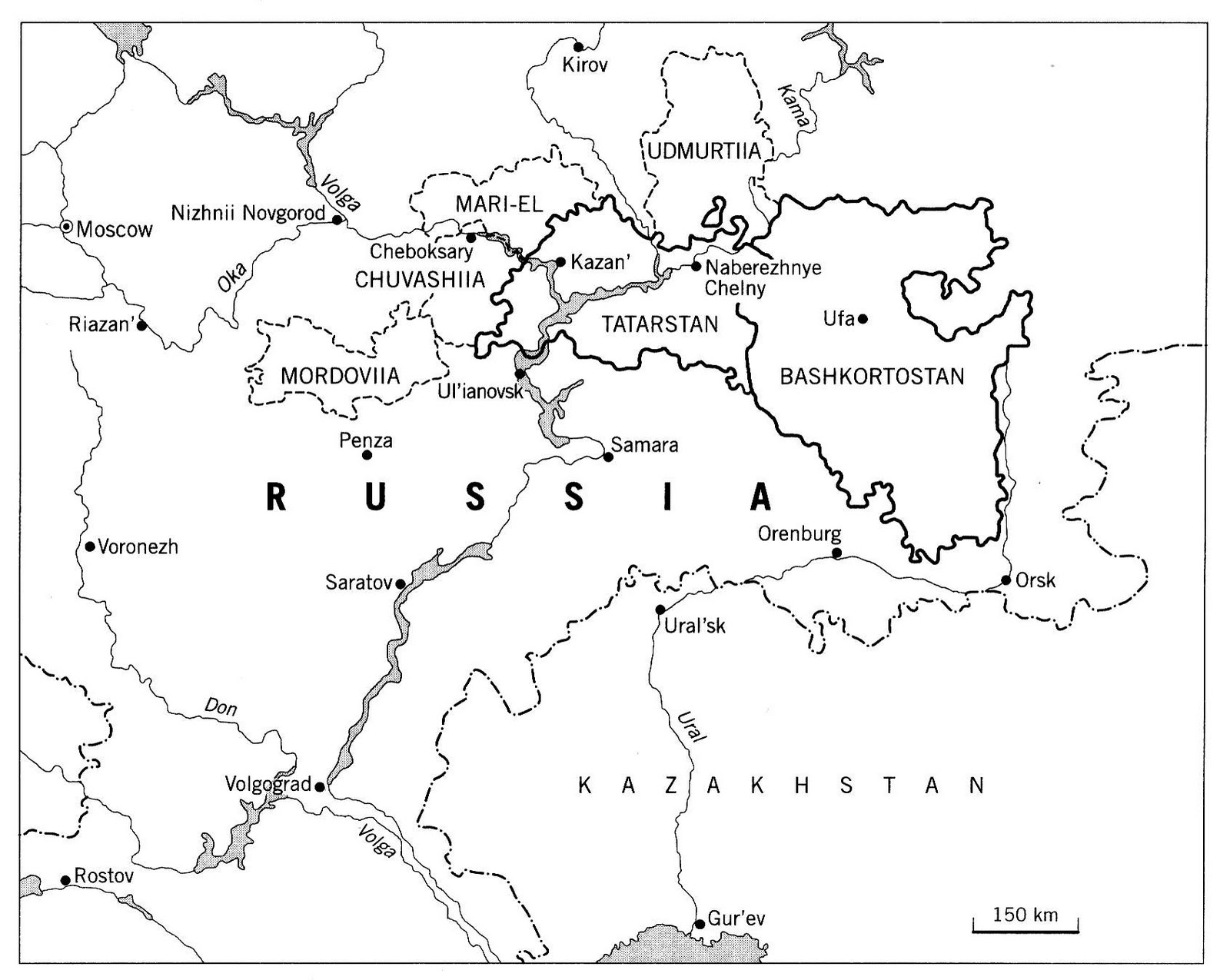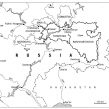
The ‘Orenburg Corridor’ and the Future of the Middle Volga
Publication: Eurasia Daily Monitor Volume: 10 Issue: 208
By:

If Joseph Stalin had not drawn “the so-called Orenburg corridor, which cut off Bashkortostan from the Kazakh SSR [Soviet Socialist Republic],” the editor of the independent Kazan weekly Zvezda Povolzhya says, Bashkortostan and Tatarstan would have gained union republic status before the collapse of the Soviet Union and would currently be independent countries. But according to Rashit Akhmetov, nothing Stalin or anyone else did or is doing has ended Bashkir and Tatar aspirations for freedom (zvezdapovolzhya.ru/obshestvo/separatizm-13-11-2013.html).
Stalin’s first great act of ethnic engineering in the Middle Volga, the division of the Kazan Tatars and the Bashkirs into two separate nations and autonomous republics in 1920, has received a great deal of attention. Yet, his second undertaking in this area, the formation of what many like Akhmetov call “the Orenburg corridor,” may have been even more significant in the past. Today, however, this corridor could finally be transformed from a wall that has kept the Middle Volga republics within the Russian Federation into a bridge that will allow them to achieve their goals and divide Moscow from Siberia.
Prior to the Bolshevik revolution, there were no national republics in the Middle Volga or in Central Asia. Instead, the populations of both regions were subordinate to non-ethnic and territorially-defined Russian gubernias (governorates or “provinces”) and governments-general. Under those provisions, the Turkic and Finno-Ugric populations of the Middle Volga extended to and mixed with the populations of the predominantly Turkic steppe. The city of Orenburg, located between them, was simultaneously an important Islamic center—it was where Catherine the Great set up the predecessor to today’s Muslim Spiritual Directorates—and a base for the projection of Russian power as the headquarters of the Orenburg Cossacks (Pipes, Richard, The Formation of the USSR, Harvard, 1964).
After 1917 and Vladimir Lenin’s successful, if highly duplicitous use of the doctrine of the right of nations to self-determination, Stalin created the autonomous and union republics of the Union of Soviet Socialist Republics (USSR). But nowhere was that process more convoluted or more obviously designed to guarantee Russian control than in the Middle Volga, Orenburg, and the neighboring Turkic Muslim areas of Central Asia and Kazakhstan.
Following the creation of the Tatar and Bashkir Autonomous Soviet Socialist Republics (ASSR), Stalin drew the border of the Kirghiz ASSR within the Russian Soviet Federated Socialist Republic (RSFSR) and had Orenburg as its capital from 1920 to 1925. During that period, Bashkortostan and, through it, Tatarstan had a border with another Turkic republic but one that was within the RSFSR. When the Kirghiz ASSR was renamed the Kazakh ASSR in 1925, as part of the national territorial delimitation of Central Asia that led to the creation of the Turkmenistan and Tajikistan union republics, Orenburg became an oblast within the Russian Federation. Then, in 1936, Kazakhstan and Kyrgyzstan, which had been autonomous republics within the RSFSR, and Tajikistan, which had been one within Uzbekistan, gained union republic status. Further complicating this map was that the Orenburg region was known as Chkalov Oblast from 1938 to 1957.
The consequences of these changes for Tatarstan and Bashkortostan were and are enormous: they no longer shared a border with a Muslim area or a union republic outside of the RSFSR. That opened the way for the Soviet authorities to crush the reformist Islam (jadidism) that the Tatars and Bashkirs had so successfully promoted beyond their home regions. And it meant that under the terms of Soviet constitutional law, the two Middle Volga Turkic republics could not aspire to union republic status with its right of leaving the union. They were blocked by the predominantly ethnic Russian “Orenburg corridor.”
At the end of Soviet times, Mikhail Gorbachev was apparently willing to consider agreeing to their elevation from ASSRs to SSRs when he was locked in a competition with RSFSR leader Boris Yeltsin. But nothing came of this. Had the Soviet president done so before 1991, Tatarstan and Bashkortostan would have been union republics within the Soviet Union and, following the USSR’s demise, independent countries like Kazakhstan or Uzbekistan. Instead, like most of the other ethnic territories of the RSFSR, both have declared themselves republics, but they remain within the borders of the Russian Federation and are thus subordinate to Moscow.
That is what makes the Orenburg “corridor” such a sensitive issue on both sides. Yet, while Stalin’s promotion of the division of the Tatars and Bashkirs appears likely to continue regardless of what else happens, the Soviet dictator’s corridor may not continue to restrain the peoples of the Middle Volga in the future. There are three reasons for that: First, the percentage of Muslim Turks in Orenburg is on the rise. Second, territorial propinquity to an external border is no longer as essential as it was under earlier economic and political conditions. And third, if there is a re-ordering of borders in this portion of the Russian Federation, dividing Orenburg between Kazakhstan and Turkic states in the Middle Volga would not be that difficult, given that the “corridor” did not exist a century ago.




